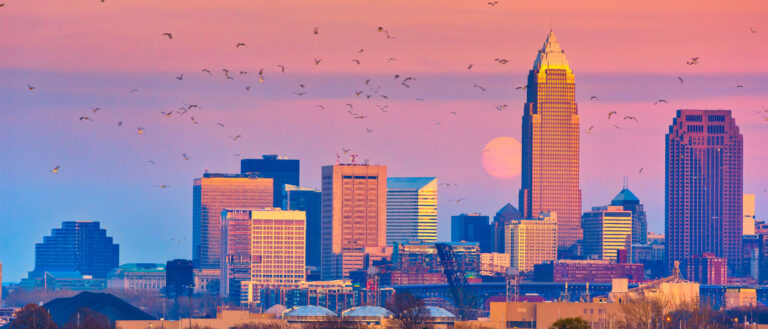Some things tie all humans together, and among them is seeing the moon hanging in the sky, night after night. Tonight, that moon will appear bigger and brighter than normal as its orbit brings it closer to Earth than usual—a celestial phenomenon known as a supermoon.
Technically, it’s a Sturgeon Supermoon, which is what the Algonquin tribes of North America named August’s full moon after seeing copious amounts of sturgeon (a species of fish) in rivers and lakes around this time of year.
To learn more about the Sturgeon Supermoon and how to catch a glimpse of it, The Daily sat down with Tiffany Visgaitis, an astronomy PhD candidate at Case Western Reserve University.
Explaining the supermoon
A supermoon, Visgaitis explained, is a special time when the moon is full and at its closest passage to Earth in its orbit—a point known as “perigee.” Since the moon is several thousand miles closer than average at this time, it can appear bigger in the sky which she said “makes it more visually exciting than your average full moon.”
“A supermoon on a warm summer night provides the perfect opportunity to admire details on the moon’s surface,” said Visgaitis. “The beautiful details we observe [on the moon, such as impact craters and the dark lunar ‘seas’] are relics of a time when the moon was being constantly bombarded by asteroids billions of years ago. Since the moon isn’t geologically active like our Earth, these features are preserved for our viewing pleasure in striking detail.”
What to watch for
Visgaitis—whose research interests include exoplanets, cosmology, and galaxy interactions—said tonight’s supermoon is set to rise in the southeast around 9 p.m. local time just after sunset and will be visible all evening until it sets in the early morning.
While the moon will be bright enough to be visible anywhere, she said it’s best to find a location unobstructed by trees or buildings to enjoy it as it rises.
“As the moon rises in the southeast near the horizon, its light will be passing through the thickest part of Earth’s atmosphere,” Visgaitis explained. “This will cause some of the blue light to be scattered through our atmosphere, leaving only the red light behind to be seen by our eyes. This will give the moon a reddish-orange tinge, similar to the sun at sunset or sunrise for exactly the same reason!”
While you’re moon-watching, keep an eye out for the Perseids meteor shower—an event involving 50 to 100 meteors per hour with occasional fireballs—which will be occurring at the same time. The supermoon’s light will likely obscure this event, but you might get lucky.
Where to watch the supermoon
Planning to head outside to watch the Sturgeon Supermoon at its peak? Grab a blanket and head to your favorite spot, or, for a more adventurous route, why not take a night hike (with friends) in Cuyahoga Valley National Park? Open 24 hours a day, the park has several options for optimal night sky viewing, including: the Ira Trailhead, Oak Hill Trailhead, Pine Hollow Trailhead and Red Lock Trailhead.
Case Western Reserve community members have a few other options for viewing future cosmic events: the observatory at Cleveland Museum of Natural History, which is just steps from campus (but the observatory is closed for construction until November); and CWRU’s rooftop telescope on top of the A.W. Smith Building, which is open but requires training to use the equipment prior to visiting.
“Students can be trained to use the observatory … which houses a 120 year-old, 9-1/2 inch refracting telescope,” said Bill Janesh, instructor of astronomy. “The rooftop telescope is especially suited to viewing the moon, Jupiter, and Saturn, as well as a handful of bright star clusters and nebulae.”
Interested in using the observatory? Discover more details and email Janesh at bfj2@case.edu to book a training session.
Thursday’s supermoon will be the last one of this year, so take some time to enjoy a beautiful summer night in Cleveland—and a full moon at its most magnificent.

